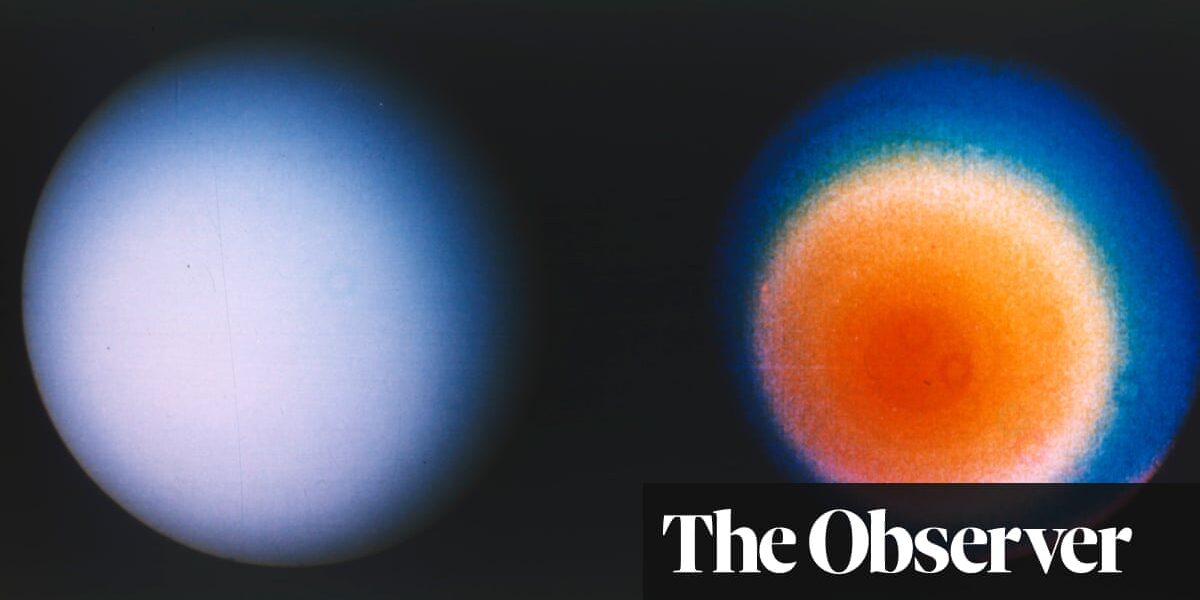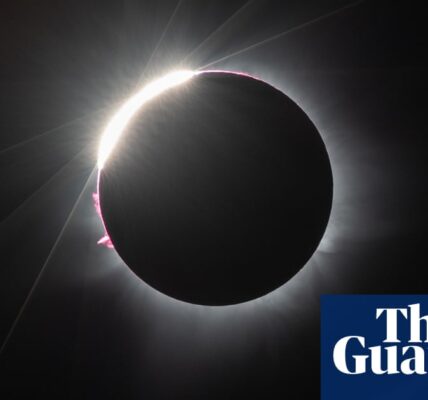
European space scientists have been urged to join forces with Nasa to ensure the success of one of the most ambitious space missions planned for launch this century.
Joining a robot spaceflight to the mysterious planet Uranus would offer “the opportunity to participate in a groundbreaking, flagship-class mission”, astrophysicists have said.
The call was made in Nature, the leading science journal, in a special editorial which exhorted the European Space Agency (Esa) to form an international partnership with Nasa. Such cooperation would ensure that the Uranus mission – which would involve putting a robot spacecraft in orbit round the planet and dropping a probe into its thick, icy atmosphere – is completed in time and on budget.
The mission will take 10 years to develop and 12-15 years to reach Uranus after launch.
The editorial’s authors, Olivier Mousis, professor of astrophysics at Aix-Marseille University, and American astrophysicist Robin Canup, of the Southwest Research Institute in Boulder, Colorado, said: “A lack of substantial European involvement in a perhaps once-in-a-lifetime flagship mission would also undermine the large community of scientists, engineers and technicians engaged in space exploration across Europe who have strong interest in planets and the search for extraterrestrial life.”
The creation of a European-US partnership for a Uranus mission would not be without precedent. In 2004, Nasa’s Cassini robot spaceship entered orbit round Saturn before releasing an Esa-built probe, named Huygens, which then made a parachute landing on the planet’s moon Titan, revealing a world with a crunchy, brittle surface and lakes of liquid hydrocarbons. The joint mission is considered to be a classic demonstration of the benefits of international spaceflight cooperation.
In their editorial, Mousis and Canup argue that if Esa does not take up the chance to join a Uranus mission, a consortium of individual European countries should be created to construct the probe that would be released from the main US-built spaceship. Britain, which has a good record in establishing co-operative ventures in space, would be well placed to play a key role in such a venture.
Scientists argue that Uranus has features that give it special scientific importance. While the rest of the planets in our solar system rotate like spinning tops, Uranus lies on its side. And although it is not the farthest planet from the sun, it is the solar system’s coldest.
Uranus also experiences seasons of incredible length. Each pole spends decades bathed in nonstop sunlight followed by decades of total darkness. Yet only one space probe has ever visited Uranus: in 1986, Voyager 2 swept past it, revealing a featureless, pale blue world with a family of moons. There have been no Earthly visitations since then.
This lack of interest is set to change, however. Two years ago, the US National Academy of Sciences published a report that called on Nasa to launch a Uranus probe as a priority flagship mission. The academy’s views carry enormous clout, and this has put Nasa is under pressure to launch a spaceship to Uranus in the near future.
Two key reasons lie behind the drive to visit Uranus. The first is local. The solar system is made of three categories of planets: the inner rocky worlds of Mercury, Venus, Earth and Mars; two gas giants Jupiter and Saturn, which lie further from the sun; and then, at the edge of the solar system, Uranus and Neptune. These are known as ice giants because they have diameters four times that of the Earth, and possess large amounts of methane, water and other ice-forming molecules in their atmospheres.
after newsletter promotion
This last feature was always considered to be intriguing but not sufficiently interesting to justify a dedicated probe until astronomers, armed with an array of powerful new telescopes and space probes, began to study planets that orbit other stars.
To their surprise, they found that planets of the size of Uranus and Neptune appeared to be ubiquitous across our galaxy. “Nature loves to make planets of this size,” Jonathan Fortney, a planetary scientist at the University of California, Santa Cruz, told the journal Science.
The question – and the second key reason for the mission – is why? Many theories have been put forward, but until Uranus is studied in detail no definitive answers will be provided. Apart from finding evidence that might explain why ice giants are common around other stars, the mission would also aim to explain why the planet is so cold and its axis of rotation is tilted sideways. Mousis and Canup insist: “The scientific drivers for a Uranus mission are compelling.”
Source: theguardian.com




